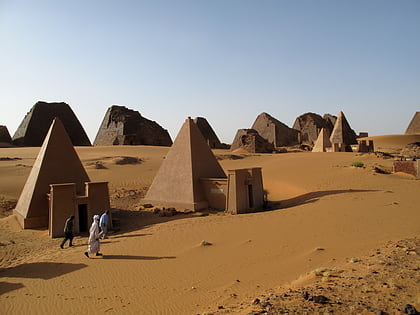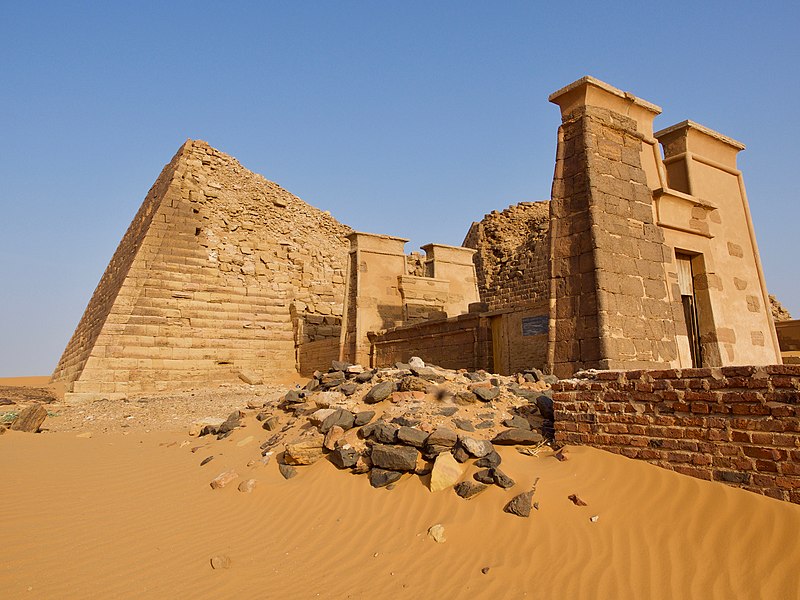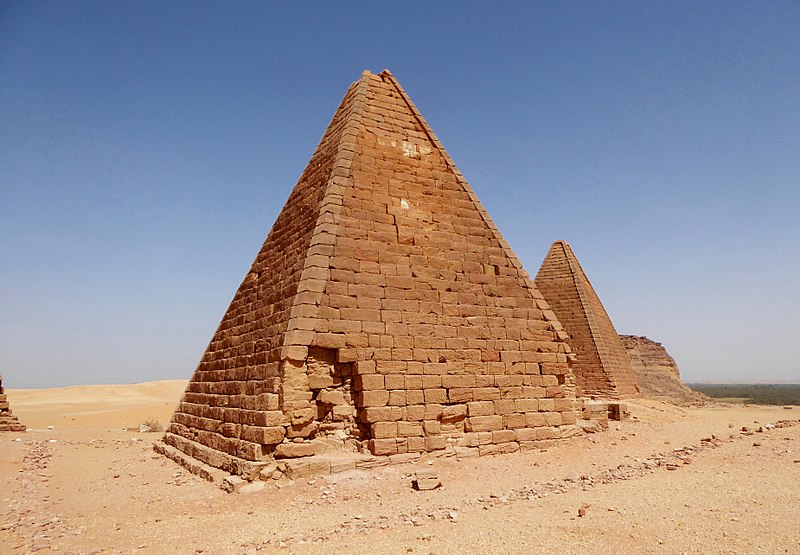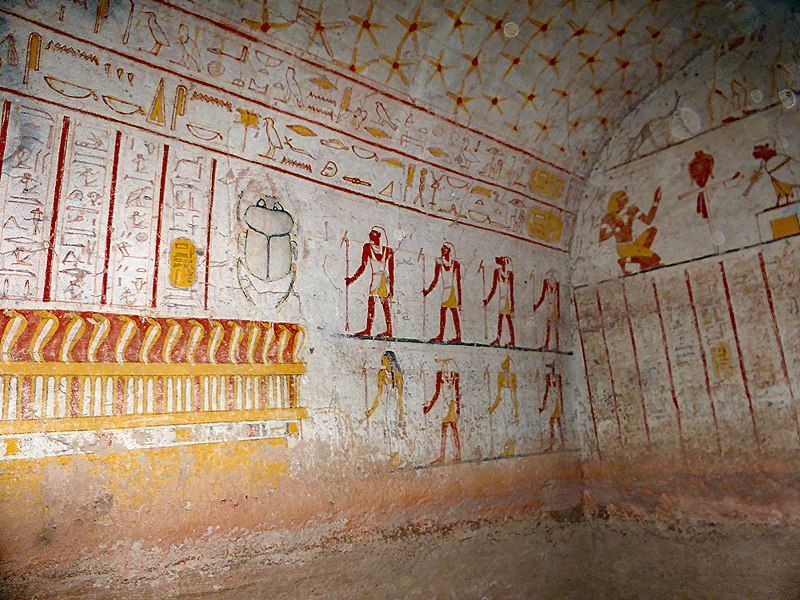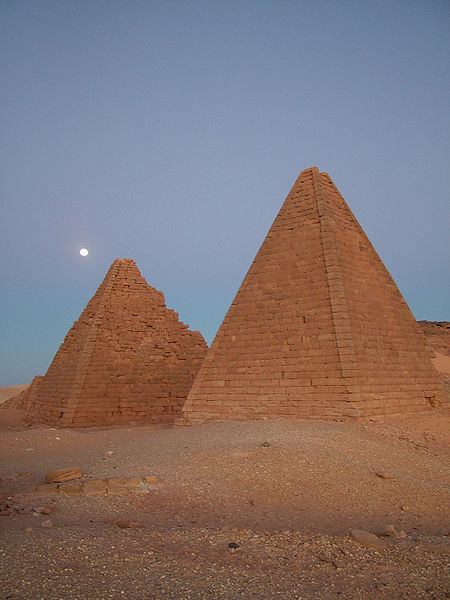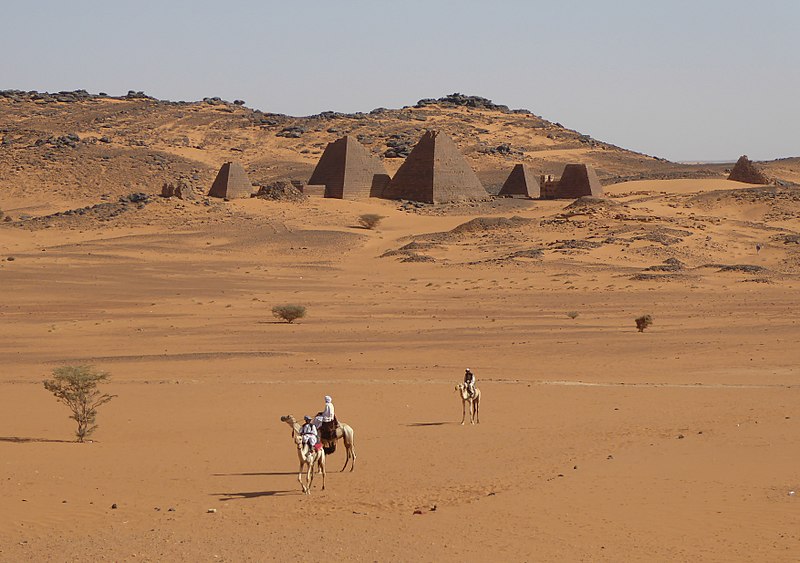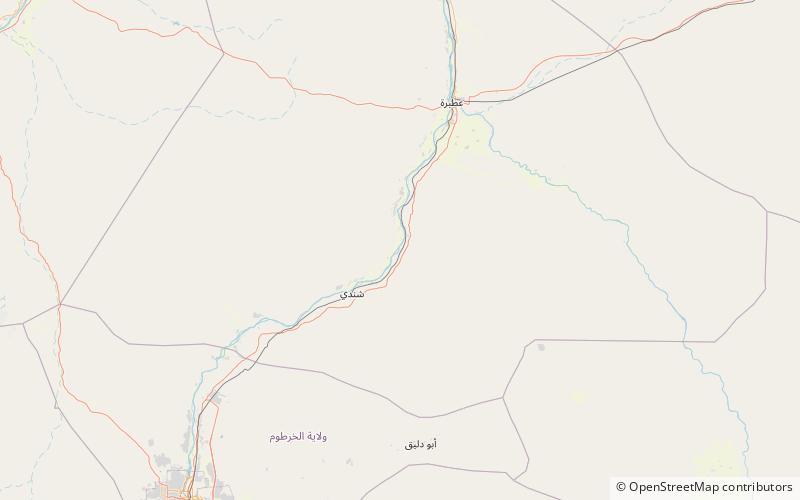Nubian pyramids, Meroë
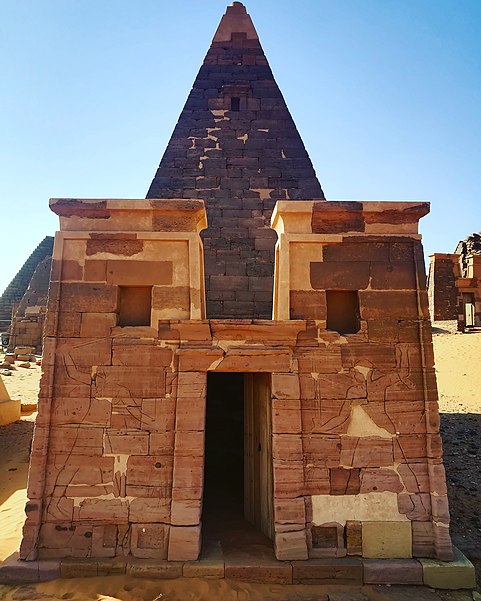
Facts and practical information
The Nubian pyramids of Meroë, Sudan, stand as a testament to the grandeur of the Kingdom of Kush, an ancient civilization that flourished alongside the Egyptians. These pyramids, numbering over 200, are smaller in size compared to their Egyptian counterparts but are equally captivating. Built between 2,700 to 2,300 years ago, they served as the final resting places for Nubian royalty and nobility.
The city of Meroë, located between the Nile and Atbara rivers, was the heart of the Kushite Kingdom and is now a UNESCO World Heritage Site. The pyramids are characterized by their steep angles and the decorative elements that reflect a unique fusion of Egyptian, Greek, and Roman art, showcasing the cultural exchanges of the ancient world.
Tourists can explore the site, which is divided into three groups: the South, North, and West Cemeteries. The South Cemetery holds the most significant number of pyramids, including some of the best-preserved examples. Visitors are often struck by the solitude and minimal tourist traffic, offering a more intimate experience than more crowded historical sites.
While the pyramids' exteriors are impressive, many interiors have been damaged by time and looters. However, some pyramids still contain hieroglyphic inscriptions and relief work that provide insight into the religious practices and daily life of the Kushites.
To visit Meroë, tourists typically travel by car or bus from Khartoum, which is approximately 230 kilometers away. It's advisable to hire a local guide to gain a deeper understanding of the history and significance of the pyramids. Visitors should be prepared for the desert environment and are encouraged to bring water, sun protection, and comfortable walking shoes.
Meroë
Nubian pyramids – popular in the area (distance from the attraction)
Nearby attractions include: Hamadab.
